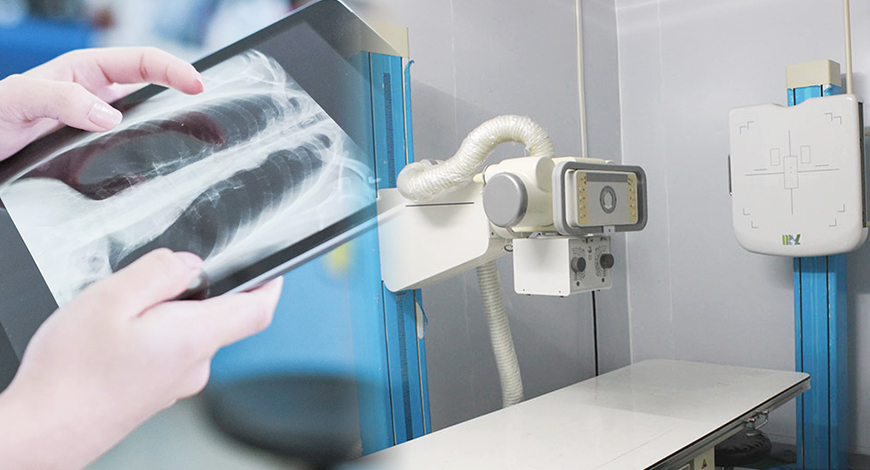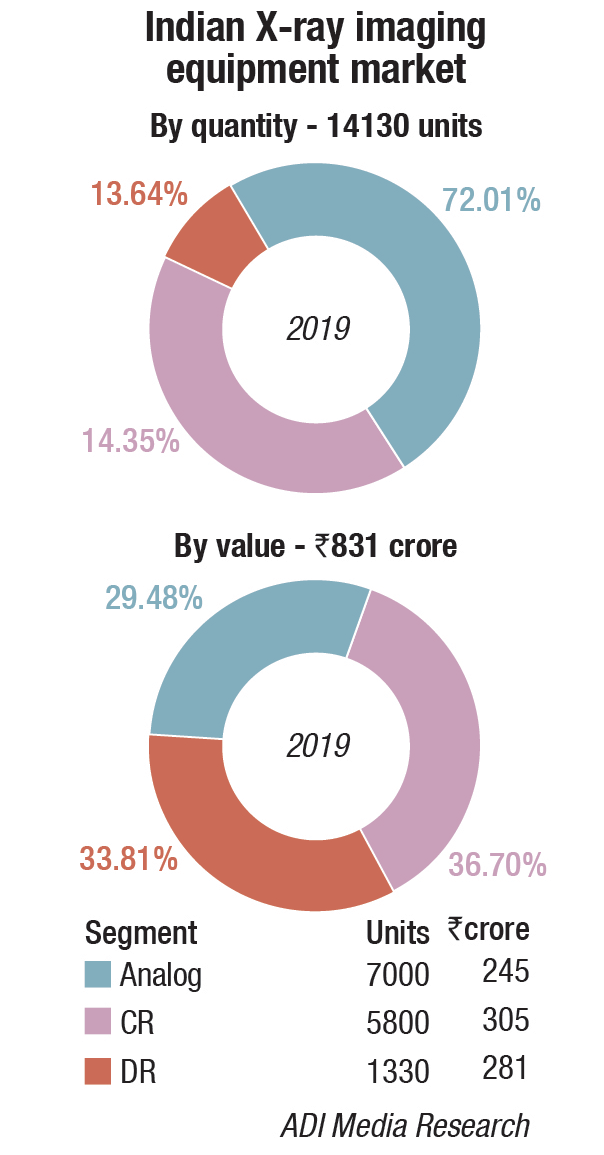MedTech
COVID-19 prompted a distinct shift to diagnostic X-ray systems in 2020

The actual impact that COVID-19 has had on the medical imaging industry still remains to be estimated, as hospitals and imaging facilities strive to figure out this new normal, and the world slowly starts to open up.
 The impact of COVID-19 on the medical imaging industry has been far-reaching and unprecedented. It is also fraught with further uncertainty and risk. These predictions are based on evidence and research from the initial spread of the virus across global markets. It is almost impossible to forecast even the near-term market impact with any great confidence; such is the volatility and complexity of the global market response to COVID-19.
The impact of COVID-19 on the medical imaging industry has been far-reaching and unprecedented. It is also fraught with further uncertainty and risk. These predictions are based on evidence and research from the initial spread of the virus across global markets. It is almost impossible to forecast even the near-term market impact with any great confidence; such is the volatility and complexity of the global market response to COVID-19.
Market dynamics
COVID-19 has diverted stimulus funds to diagnostic X-ray systems to help facilitate diagnostic imaging facilities, resulting in a higher than anticipated uplift in the radiography market in H12020 than predicted pre-COVID-19.
Mobile digital radiography (DR) systems are at the forefront in providing an initial screening for pneumonia, a secondary and more progressive stage of COVID-19 in severe cases.
Imaging is not routinely designated in asymptomatic individuals with mild COVID-19 symptoms unless they are at risk for disease progression. Mobile DR systems are used heavily to track progression of pneumonia due to the capabilities of bedside imaging enabling use in emergency rooms, A&E facilities and in the ICU. Mobile DR imaging has benefits of offering quicker, and less costly imaging services than other modalities.
For imaging COVID-19 patients the portability aspect is very useful. Mobile general radiography systems are not only a cost-efficient alternative to a fixed radiography room, they also allow technicians to bring the equipment to the patient, rather than having to bring the patient to the equipment. This helps save critical time for serious cases of COVID-19 in reaching an initial diagnosis, resulting in more efficient workflows and usage in A&E facilities, ICU, and designated COVID-19 units.
Mobile DR equipment dedicated to COVID-19 imaging are set up closer to intensive care units, decreasing risk of virus transmission. The manufacturers saw a rapid increase in demand for mobile DR to hospitals in H1 2020.
Prior to COVID-19, the digital radiography segment (inclusive of fixed DR rooms and mobile DR systems) was forecast to increase by 9 percent in the number of unit shipments (base growth). However, this estimate is in for a sharp upward revision, the increase could be as high as 35 percent in H1.
In the minimal-growth scenario, worse-case growth, the growth of the global DR segment is forecast at 13 percent in unit shipments in H1. This is due to the lack of availability of systems, mobile DR manufacturing capacities, and a fall in demand for mobile DR systems as the number of new infections continues to fall in some parts of the world.
The existing installed analogue mobile X-ray systems at hospital facilities have also seen an upgrade to digital mobile technology via retrofit solutions in another step toward increasing availability of mobile DR systems.
With hospital funds being diverted to diagnostic X-ray systems, in particular mobile digital radiography, image guided therapy X-ray systems, such as interventional X-ray and mobile C-arm systems, have experienced a decline in demand in the first quarter in 2020. In countries most impacted by COVID-19, non-critical surgeries and diagnostic procedures have been postponed or delayed; most medical professionals have been redeployed to more critical departments to help tackle the pandemic.
The utilization of interventional X-ray is projected to decline in 2020; as the number of interventional procedures is projected to fall in the short term, thus delaying new purchases until the COVID-19 pandemic subsides. Due to their saturated markets, similar declines are projected for mammography and mobile C-arm X-ray solutions, as priorities are focused on increasing diagnostic imaging in COVID-19 patients.
Demand for interventional X-ray, mobile C-arm, and mammography X-ray systems is forecast with gradual return in 2021 and 2022, with delayed or pending orders being processed.
2020 and beyond
As a result of the COVID-19 pandemic, pending orders for mobile DR systems for late 2020 and 2021-2022 have been brought forward to early 2020. Therefore, demand is forecast to retract in Q4 of 2020, as well as in 2021. Spend has been diverted from image guided therapy X-ray systems to mobile diagnostic DR systems to increase and enable more diagnostic capabilities and treatment of COVID-19.
Due to demand plummeting for mammography, interventional and mobile C-arms in countries most highly impacted by COVID-19, recovery is projected in late 2020 through to 2022.
The sheer necessity to access mobile DR systems has meant purchasers have increased flexibility on specifications, with purchasing decisions purely founded on supply available by mobile DR manufacturers.
In light of the COVID-19 pandemic there have not been any changes in pricing dynamics or price cutting of mobile DR systems.
In order to future proof against similar pandemics in the futures, hospitals may focus on purchasing mobile DR systems with anti-microbial coatings and ease of sterilization, software and hardware features which enable increased patient and radiographer protection, quicker image processing, workflow optimization and artificial intelligence assisted clinical decision-making software.
Artificial intelligence tech companies are forecast to be more reactive in developing bespoke solutions to help tackle such pandemics. Several vendors have rushed to the market with AI-based clinical applications for the triage and diagnosis of COVID-19.
As the year progresses, the anticipated backlog of imaging studies will put additional pressure on radiology departments, and this will drive increased interest in AI tools that help to maximize productivity and to prioritize cases.
However, the robustness of some of these solutions is questionable. If health providers have a poor experience with these tools, it may set back the more widespread adoption of AI-based clinical applications. This could have a substantial impact on healthcare provider trust in AI solutions and willingness to further invest in innovative AI-based systems in the mid-term future.












